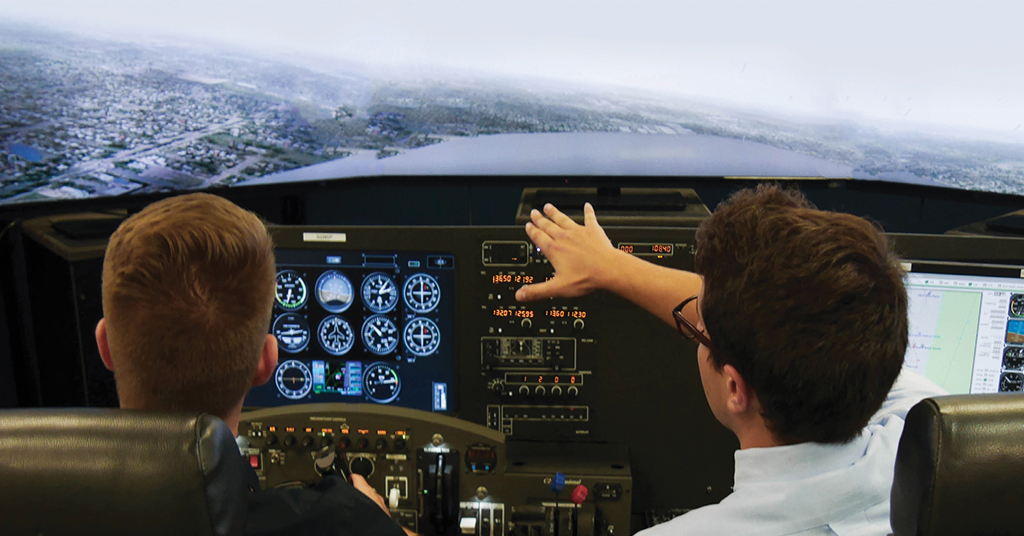By: Steven Daun, National Chief Pilot
Records show that methods to tell the future, like a crystal ball, have been used as far back as the 1st century. Soothsayers used the magic ball to give advice to the world’s most powerful people. If you think about this, you must ask yourself whether the ball, the soothsayer, or the individual made the difference. While we may not ever know the answer to that question, we know that people have spent much to find out what the future holds in store for them.
The 20th century was certainly much farther along in history regarding science, technology, education, and knowledge than the 1st century. Edwin Link made the first “flight simulator” in 1929. Mr. Link’s motivation was to educate pilots in a safe and stable environment without worrying about the physical airplane. Ever since Mr. Link created his invention, the pilot community was split in two. There were those pilots who dreaded and avoided the simulator at any cost, and there were those who saw the simulator as the modern-day crystal ball for pilots.
When thinking about using a simulator (AATD for this article’s purpose), you should not expect the feeling of flying an airplane. Your expectation should be that you now have a device that will help you look into the future and see how you will respond if and when something goes wrong. In the hands of a good instructor, a pilot should come away from one of these sessions feeling confident in instrument failures, emergencies, systems, and troubleshooting. Once you as the student understand how your instructor is using the simulator, you should be able to practice on your own during solo simulator sessions. To assist students with these solo simulator tasks, the American Flyers’ training manuals contain outlines of “training maneuvers” that represent the solo sim sessions they can practice independently.
Imagine your next cross-country flight if you flew it in your crystal ball first. You can see the terrain, airport layout, and landmarks. You can fly the different approaches and develop a set of contingency plans for your flight. You can practice emergencies and engine-out procedures at different locations around the airport and go through all the “what if” scenarios that you can think of. While it may not be an actual crystal ball, it is the closest thing that we have to help you look into the future.
If you have ever had the chance to observe an airline training its crews in a full flight simulator, it does not take long to realize that much of the training they do is based on emergencies, failures, and urgent situations. It should not be any different for the general aviation pilot.
An old saying in the military states, “the more you sweat in practice, the less you will bleed in battle.” Similar things can be said for pilots. The more you sweat in the simulator, the less panicked, scared, stressed (you pick the descriptor) you will be in flight.
You should go into each simulator session with a plan of action that includes tasks built on top of each other. If you are going to practice approaches, start with course intercepts then a full approach then a missed approach. Do not just set up for the ILS and leave it at that. Remember, you are building muscle memory. It should follow the normal path and sequence that you practice in flight. For VFR pilots, you can practice your emergency procedure skills and navigation skills.
Do not dread or turn down an opportunity to fly a simulator. Embrace it and approach it with the attitude of “what can I learn today about my airplane and myself?” Your future will depend on it.










